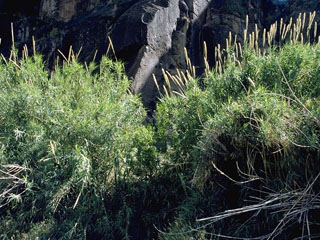Giant Reed is a Giant Problem in Texas
This is Passport to Texas
Texas has its share of invasive plants and animals, including Arundo Donax, or giant reed; you’ve probably seen it along roadways and river banks.
13— If you see it on roadsides, it’s very tall—grows up to about 30 feet. Has segments, really broad, pointed leaves—huge showy plumes. It can actually be quite pretty. And it looks somewhat like corn.
Giant reed is a non-native grass. Monica McGarrity who studies aquatic invasive for Texas Parks and Wildlife, says its greatest impact occurs when it gets into areas along rivers and creeks.
18—They have these impacts because they’re able to outcompete the native plants and push them aside, displace them. And when we’re talking especially about riverside, riparian areas, along our creeks – diversity of native plants is really important to the wildlife, and for maintaining the overall health of the community.
When giant reed displaces native plant communities, the result is reduced habitat quality.
17— It reduces quality for birds and other wildlife. And then it can start to— over time – have impacts on the stream itself, and reduce the habitat that’s available to the aquatic community, and make it more homogenous, more the same throughout. Rather than having diverse pools and riffles and habitats that they need.
Monica McGarrity returns tomorrow to tell us how not to try and remove this plant from our property.
The Sport Fish Restoration program supports our series.
For Texas Parks and Wildlife, I’m Cecilia Nasti.



 Passport to Texas is a
Passport to Texas is a  Passport to Texas is made available by:
Passport to Texas is made available by: